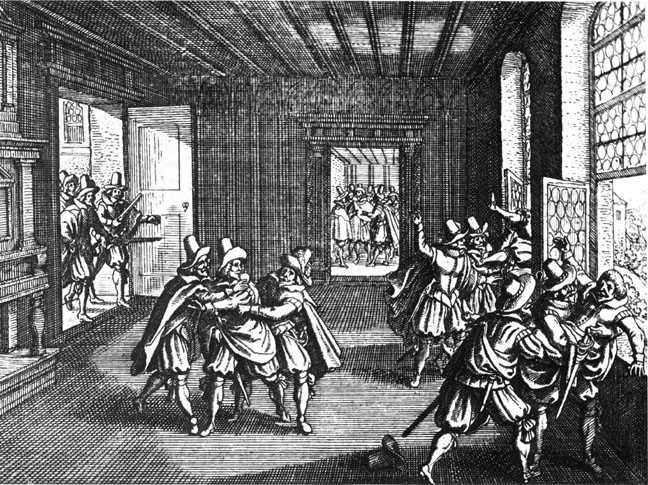The intricate late Gothic ceiling in Vladislav Hall is the work of Benedikt Rejt, the Norman Foster of his day. Completed in 1500, Vladislav Hall has hosted banquets, councils, coronations and, occasionally, indoor jousting tournaments. The smell must have been… concentrated.
Prague’s Old Royal Palace is also the scene of a famous act of political protest. On the 23rd of May, 1618, a group of Protestant nobles met with four Catholic Lords Regent in the office of the Bohemian Chancellery. The Protestants were angry at new incursions on their lands and freedom by the Habsburg Emperor.
Negotiations did not go well. Two of the lords regent were politely removed from the room via the door. The remaining two, along with their secretary Philip Fabricius, went another way – out the window. Depending on which source you choose to believe, angels or horse dung broke their fall.
The Second Defenestration of Prague (yes, there was a first) touched off the Thirty Years’ War. In honor of his service, the Emperor granted Philip Fabricius a new title: Baron von Hohenfall, aka “Baron of Highfall”.
Though it’s a still a matter of contention, Prague may have claim to a Third Defenestration. In 1948, Jan Masaryk, the only resolutely non-Communist member of the post-war government, was discovered dead in the courtyard of the Foreign Ministry (the Czernin Palace). He was dressed in his pajamas.
Communist authorities ruled he had committed suicide by jumping from the bathroom window above. Others were more circumspect. A Czech saying grew into effect: “Jan Masaryk was a very tidy man. He was such a tidy man that when he jumped he shut the window after himself.”


